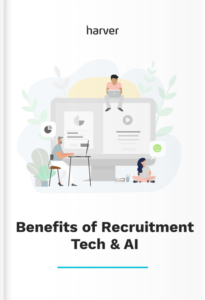HR-tech is booming. In 2015 alone, the entire HR software market was worth over 15 billion dollars. HR leaders are spending a considerable part of their budget on software and are particularly keen on Mobile HR and onboarding tools. It seems like there’s a bright, mind-boggling future ahead of us, but how did we get this far? Let’s have a look at HR technology: then, now & tomorrow.
Like what you see?
Don’t miss out. Subscribe to our quarterly digest to get the latest TA and TM resources delivered right to your inbox.
The Fifties & Sixties
So you think the sixties were all about love, peace and flower power? Then think again. Even back then people thought about cost cutting measures, it’s one of the reasons HR technology was developed in the first place. In order to eliminate manual payroll processing and the number of people needed to do the work, an automated solution was developed: LEO I.
The Eighties
With the eighties came the birth of the HMRS, the Human Resources Management System. All of a sudden the computer became a familiar object in the office landscape and soon the development of the first PC-based HR applications was a fact.
The Nineties
As for many other industries, the internet was a big game changer for the HR-tech sector. New, web-based technology allowed HR practitioners to access information from more than one location. On top of that, they could easily share data, something that up until then hadn’t been possible.
2009
This was the SaaS year. Software as a Service (Saas), also referred to as on-demand software, has radically changed the HR-tech world. A third-party provides the software which is hosted in ‘the cloud’. Users subscribe to the service and the applications are used online, files are being saved in the cloud as well.
Here you can read more about Software as a Service.
And Beyond
With the arrival of Saas, the real HR Data Revolution began. Plenty of new solutions for different areas came on the market. Think of recruitment, talent management and HR data analytics for example. At the same time, there is a growing awareness among HR professionals about the technology developments in their field of expertise and the benefits this can have for them on a day to day basis. As a consequence, we see an increased spending on HR-tech which has led to an enormous market growth in cloud-based technologies over the past few years.
Tomorrow
Given the more than exponential growth of HR applications that we’ve seen since 2009, it’s virtually impossible to make any decent predictions about the future. Who knows where we’ll be 10 years from now? There are a few things we can say with some certainty though.
Mobile HR increased by 92% last year and seems to emerge as one of -the- disruptive HR technology trends for 2016 according to Deloitte. We’ve talked about mobile recruitment and how to implement a mobile strategy a few weeks ago. Here you can find out more about it.
Other trends detected in the same Deloitte report by Bersin include developments in the talent management space, software that contains feedback & engagement and last but not least, the field of predictive analytics. Bersin thinks it’s very likely for predictive analytics to become one of the most important features on HR-tech platforms. You can find the full article here.
As you can see we’ve come quite a long way in a short amount of time. The rate of development in HR Tech is growing exponentially and we’re curious to see what the future hold for us. One thing is certain: The next few years are going to be really exciting!
How AI & recruitment technology is changing recruiting experience
Find out how tech has helped other companies grow by enhancing both the recruiters’ and candidates’ experience!



